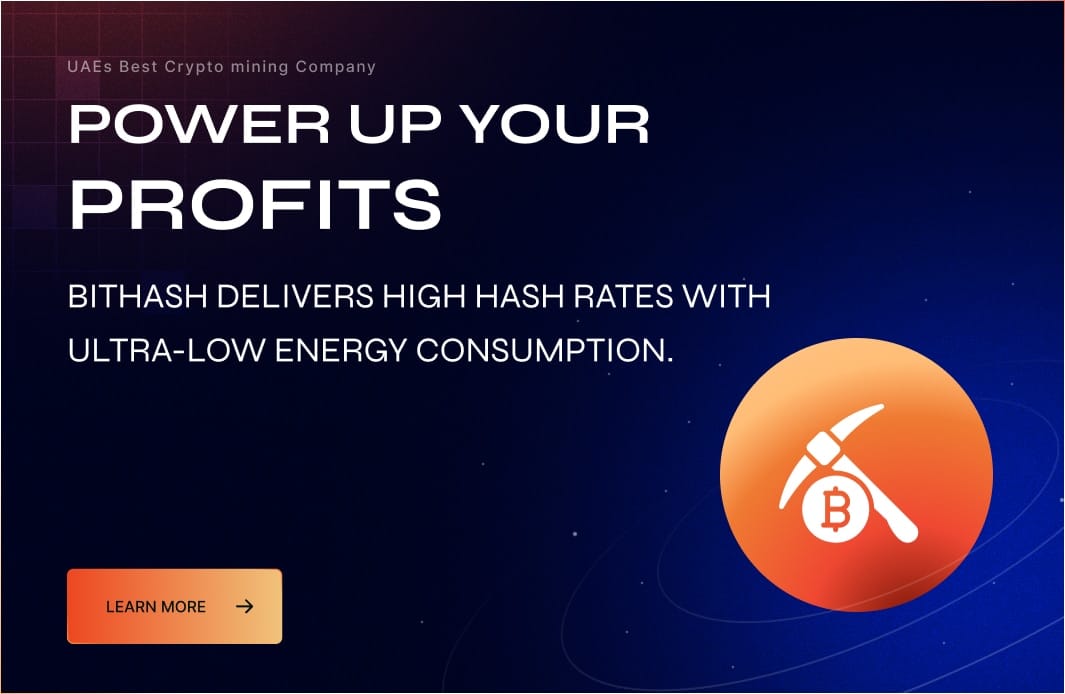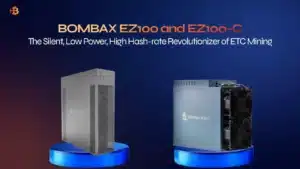Cryptocurrency mining has been a lucrative venture for over a decade, but with increasing competition, regulatory scrutiny, and evolving technology, many wonder: Is Bitcoin mining still profitable in 2025?
In this blog, we’ll break down the key factors affecting mining profitability, including hardware costs, electricity prices, cryptocurrency market trends, and regulatory challenges. We’ll also explore different mining methods like ASIC mining and GPU mining, the role of mining pools, and whether building a mining rig in 2025 is still worth the investment.
1. The State of Crypto Mining in 2025
Cryptocurrency mining in 2025 is no longer the small-scale operation it once was. The surge in global competition, with both individual miners and massive industrial mining farms joining the race, has dramatically intensified the need for greater computational power. This has been fueled by continual advancements in GPU mining and specialized ASIC rigs, pushing efficiency and hashrates to new highs.
However, this evolution hasn’t come without trade-offs. The increased mining difficulty, particularly after Bitcoin’s most recent halving, means that the mining reward has decreased substantially, challenging profit margins. For miners to stay afloat, controlling energy consumption has become a top priority.
Given the steep energy cost in many parts of the world, miners are transitioning toward renewable energy resources such as solar, wind, and hydro to reduce overheads and meet environmental standards. This shift not only makes cryptocurrency mining more sustainable but also helps miners remain compliant with tightening regulations in key jurisdictions.
So, is mining still worth it in 2025? The answer depends on several variables: access to low-cost, renewable electricity, highly efficient mining hardware, and strategic positioning within favorable regulatory zones. Without these, miners may find the endeavor more of a liability than a gold rush.
2. Key Factors Affecting Mining Profitability
The following are some major key factors that are affecting mining profitability:
A. Mining Hardware Efficiency
The most critical factor is the cost and efficiency of mining hardware.
- ASIC Miners (Bitcoin, Litecoin, etc.)
- Next-Gen Mining Hardware Modern rigs like the Bitmain Antminer S21 and Whatsminer M60 deliver higher hash rates while using less power, significantly boosting energy efficiency in bitcoin mining.
- Outdated Models Falling Behind Older machines, especially pre-2023 models, often can’t keep up with today’s mining difficulty and rising energy costs—making them less viable in 2025’s competitive landscape.
- GPU Mining (Ethereum Classic, Ravencoin, etc.)
- Post-Ethereum GPU Mining After Ethereum’s switch to Proof-of-Stake, its mining community—largely GPU-based—migrated to other mineable coins like Ravencoin, Kaspa, and Ergo. These coins now form the backbone of GPU mining strategies in 2025.
- Profit Hinges on Two Factors Your bottom line still boils down to electricity costs and current coin prices. In regions with low power rates and access to efficient hardware, mining can remain profitable—especially if you’re early to promising altcoins.
Bottom Line: If you have access to the latest hardware, mining can still be profitable. Older rigs may struggle to break even.
B. Electricity Costs
Electricity is the biggest ongoing expense for miners.
- Target Electricity Rate To keep mining sustainable—especially in bitcoin mining—your electricity cost should ideally stay below $0.06 per kWh. Anything above that starts to eat into profits fast, particularly with rising mining difficulty and tighter margins.
- Challenges in High-Cost Areas In regions like Europe and parts of the US, soaring energy prices make mining far less profitable. Unless miners tap into renewable energy resources or receive government subsidies, the economics simply don’t add up.
- Advantage in Low-Cost Regions Locations such as Central Asia, the Middle East, and parts of Latin America continue to offer low electricity rates, making them hotspots for large-scale mining farms. Coupled with favorable climate conditions and evolving regulations, these areas remain strategically valuable.
Solution: Some miners use flare gas, solar, or hydroelectric power to reduce costs.
C. Cryptocurrency Market Prices
Mining profitability depends on coin prices and block rewards.
- Bitcoin Halving (April 2024) The 2024 halving slashed block rewards from 6.25 to 3.125 BTC, significantly reducing miner income, especially for those with high operating costs.
- Profit Depends on Bitcoin Price If Bitcoin’s value spikes above $100K, bitcoin mining stays lucrative despite lower rewards, as higher coin prices offset reduced payouts.
- Altcoin Opportunities & Volatility Coins like Kaspa, Monero, and Zcash may offer better short-term mining profits, especially for GPU or CPU mining setups. However, their value can swing wildly, making them riskier bets.
Prediction: If the 2024-2025 bull run materializes, mining could see a resurgence.
D. Mining Difficulty & Network Hash Rate
- Bitcoin Difficulty Adjustments Every ~2 weeks (or every 2,016 blocks), bitcoin mining difficulty automatically recalibrates to reflect changes in network participation. This keeps block times steady.
- More Miners, Less Profit As more miners join the network, difficulty rises—meaning each miner earns a smaller slice of the reward unless their hardware and efficiency scale up too.
- Institutional Mining Dominance (2025) Large, professional mining farms now dominate the landscape in 2025. With access to cheap energy, custom ASICs, and economies of scale, they’ve made it tough for smaller miners to stay profitable without clever strategies.
Workaround: Join a mining pool to earn consistent (but smaller) rewards.
E. Regulatory Challenges
- China’s Mining Ban & Global Shift China’s 2021 ban pushed many miners to relocate to countries like the US, Kazakhstan, and Russia—regions with cheaper energy and fewer restrictions.
- Tighter Energy Regulations in US/EU As mining expanded, the US and EU introduced stricter rules focused on environmental sustainability, pushing miners to adopt cleaner, more energy-efficient setups.
- Tax Implications Mining rewards are taxed differently worldwide—some treat them as income, others as capital gains. Staying informed is essential to avoid penalties and optimize earnings.
Advice: Check local laws before investing in mining rigs.
3. Is Mining Still Worth It in 2025?
✅ Yes, If…
✔ You have access to cheap electricity ($0.05/kWh or lower), ideally powered by renewable energy resources like solar or hydro.
✔ You’re using cutting-edge mining machines with superior energy efficiency and performance.
✔ You mine promising altcoins using optimized mining algorithms that deliver better returns than Bitcoin at times.
✔ You operate in a mining-friendly jurisdiction with supportive regulations and infrastructure.
✔ Your setup includes advanced cooling systems to maintain hardware longevity and reduce downtime.
✔ You’re a seasoned miner or a solo mining enthusiast equipped with knowledge and patience.
❌ No, If…
✖ Your energy cost is high (above $0.12/kWh) and you’re reliant on fossil-fuel-based grids.
✖ Your mining machines are outdated or inefficient, especially pre-2023 GPU or ASIC rigs.
✖ You’re solely focused on Bitcoin mining without adapting to other profitable opportunities.
✖ You’re unable to navigate market volatility, regulatory uncertainty, or escalating mining difficulty.
4. Best Mining Strategies for 2025
- Cloud Mining (Passive Income) For individuals who want exposure to bitcoin mining without managing physical hardware, cloud mining services like NiceHash and Genesis Mining offer a low-entry alternative. Users rent hash power from large bitcoin miners and earn a portion of the mining reward. Pros: No need for setting up or maintaining mining machines, no concerns about cooling systems or electricity bills. Cons: Lower profitability compared to on-site mining, potential risks from unverified platforms or scams. For long-term gains, especially in bitcoin mining, choosing a reputable provider is essential.
- Mining Pools (For Small Miners) Small-scale miners often lack the computational power to compete solo, especially in ASIC Mining-dominated spaces. Joining mining pools like F2Pool, Antpool, or ViaBTC allows miners to combine resources and share consistent payouts. This is especially useful for both bitcoin mining and emerging altcoins. Pro tip: Even CPU mining, which is less common for Bitcoin but viable for certain altcoins, benefits from pooled strategies.
- Heat Recycling (Home Mining) In colder regions, home-based miners have found innovative ways to offset electricity use: channeling the heat generated by mining machines to warm their homes. This approach can enhance overall energy efficiency, particularly during winter. Bitcoin miners using ASICs generate significant heat—why not turn a challenge into a benefit?
- Alternative Coins (Altcoin Mining) While bitcoin mining remains king, it’s becoming increasingly competitive. Diversifying into altcoins like Kaspa, Alephium, or Dynex, especially with CPU mining or GPU mining, allows miners to tap into promising assets early, before mining difficulty escalates. These coins may use unique mining algorithms that are better suited to lower-end hardware.
5. Conclusion: Should You Mine Crypto in 2025?
In 2025, the cryptocurrency mining landscape continues to evolve rapidly, shaped by rising mining difficulty, hardware innovations, and an increasing focus on energy sustainability. Large-scale miners who benefit from access to ultra-cheap electricity, especially those leveraging renewable energy resources like hydropower or solar farms, and who deploy the latest-generation ASIC mining machines are still in a strong position to profit. Their scale and operational efficiency allow them to absorb market fluctuations and regulatory shifts more effectively.
On the other hand, small-scale miners may find profitability harder to achieve unless they adopt smarter strategies. These include mining undervalued alternative coins (altcoins) with growth potential, optimizing their hardware choices (like energy-efficient GPU or CPU mining setups), or participating in cooperative models like mining pools. For those without access to low energy costs or modern rigs, traditional bitcoin mining might not offer sustainable returns.
Alternative options such as cloud mining and crypto staking provide lower-risk entry points for beginners or investors who prefer passive income streams.





